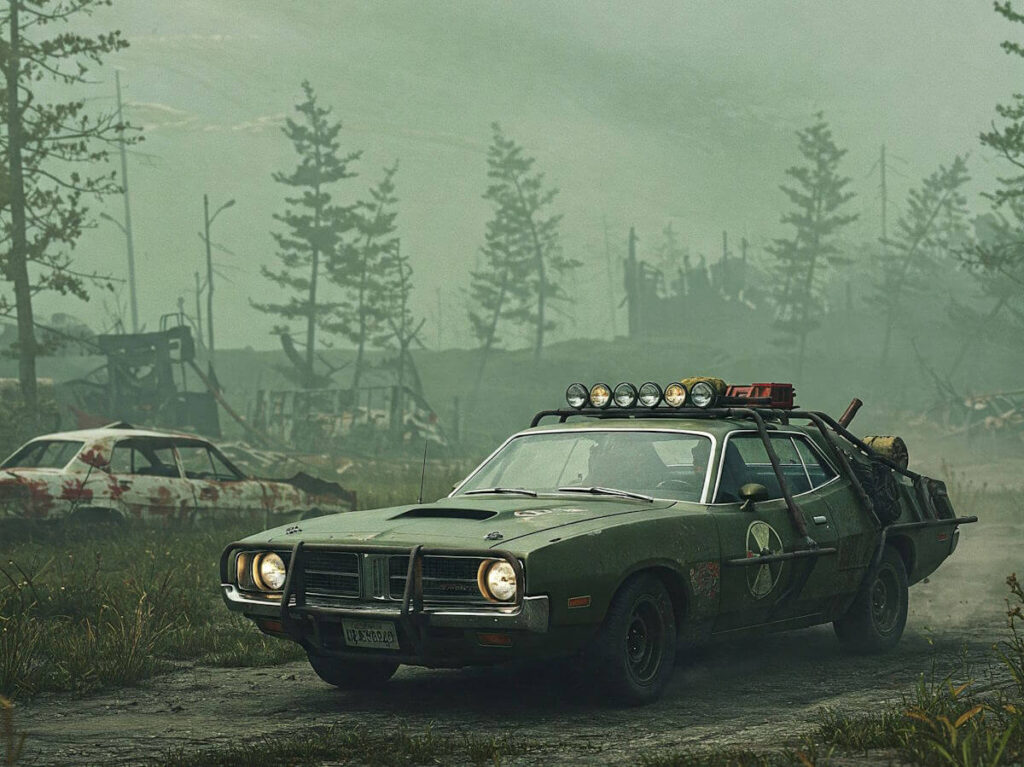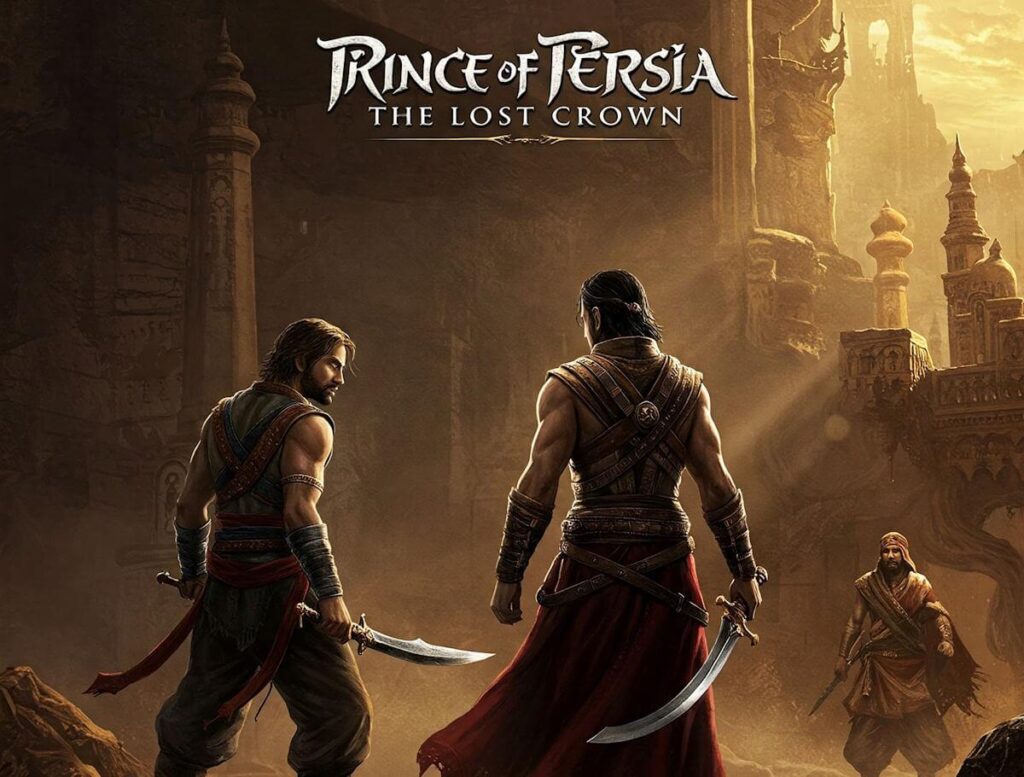Pacific Drive is a distinctive adventure game that merges survival mechanics with a captivating driving experience, setting itself apart in the gaming landscape. Created by a team of talented developers, the game offers players an opportunity to navigate through a post-apocalyptic world, where they must not only survive but also maintain their vehicle, which serves as both a mode of transport and a crucial lifeline. The game’s innovative blend of driving and survival elements invites players to confront the challenges posed by the environment, forcing them to adapt to an ever-evolving scenario.
Set against the backdrop of the Pacific Northwest, players embark on a journey that explores the abandoned roads and haunting landscapes of a world devoid of civilization. The game is designed to immerse players in an atmosphere filled with suspense and uncertainty, where every decision can lead to either progress or peril. As they traverse the wilderness, players must manage limited resources, repair their vehicles, and fend off environmental hazards, all while uncovering the mysteries that surround their journey. The ever-present threat from the environments adds a layer of tension, making each trip feel both exhilarating and daunting.
The premise of Pacific Drive revolves around the concept of exploration and resource management. It challenges players to think strategically as they navigate through diverse terrains, each presenting its unique set of obstacles and opportunities. This innovative mix fosters a sense of immersion and encourages players to engage more deeply with the game mechanics. By combining traditional driving gameplay with survival challenges, Pacific Drive offers a fresh take on adventure gaming, promising an experience that is both thrilling and thought-provoking for players of all levels.
Gameplay Mechanics and Features
Pacific Drive presents a distinct blend of gameplay mechanics that intertwine driving, exploration, resource management, and crafting to create an immersive gaming experience. Set in an expansive open world, players navigate through a post-apocalyptic landscape, primarily utilizing a customizable vehicle as their main mode of transport. This vehicle serves not just as a means of mobility but also as a critical survival tool, reinforcing the integral role driving plays in the overall gameplay.
The exploration aspect is deeply woven into the narrative and mechanics of Pacific Drive. Players are encouraged to venture into diverse environments, each filled with hidden resources, challenges, and potential threats. As players drive through these varied terrains, they must remain vigilant, as the unpredictability of the landscape and its inhabitants can significantly impact their survival. The exploration component promotes a sense of adventure and discovery, urging players to uncover the secrets of the world while managing their vehicles’ condition and fuel.
Resource management is another crucial feature that demands players’ attention. Scavenging for supplies not only contributes to their survival but also impacts their vehicle’s efficiency. Items such as fuel, spare parts, and crafting materials must be strategically collected and utilized, complicating the dynamic of gameplay. Players need to balance the urgency of gathering resources with the necessity of maintaining a functioning vehicle, which can lead to intense moments of decision-making.
The crafting system adds a further layer of depth, allowing players to modify their vehicles and gear, enhancing their effectiveness against environmental hazards and threats. Players can create upgrades using the resources they have gathered, tailoring their gameplay experience to suit their strategy and survival needs. Overall, the core mechanics of Pacific Drive work in concert to craft a compelling and engaging experience, making it a distinctive entry in the survival genre.
The Role of Environment and Setting
The environment in which Pacific Drive is set plays a critical role in shaping both the gameplay and the overall experience for players. Set against the backdrop of a dystopian Pacific Northwest, the game’s landscape is marked by a blend of natural beauty and eerie post-apocalyptic elements. This unique combination creates an atmosphere that is both captivating and foreboding, serving to enhance the survival aspects of the gameplay. Players are not just navigating through a virtual world; they are immersing themselves in a setting that feels alive and responsive. The changing weather patterns, shifting time of day, and diverse terrains contribute significantly to this immersive experience.
One of the most striking features of the environment is its dynamic nature, which profoundly affects gameplay. The lush forests, rugged mountains, and desolate urban areas present a wide range of challenges that require strategic planning and adaptability. For instance, players may need to consider how rain impacts driving conditions or how encounters with wildlife can lead to unexpected dangers. This environmental variability not only influences immediate decision-making but also necessitates long-term strategies as players collect resources, upgrade their vehicles, and prepare for the perils that lie ahead.
The game’s aesthetics further amplify its atmospheric appeal. The visuals are characterized by vibrant colors contrasted with darker, more ominous undertones, reflecting both the beauty and treachery of the world. Sound design also plays an integral role; the subtle rustling of trees or distant animal calls can heighten tension and contribute to a sense of isolation. These elements work cohesively to create a rich and immersive environment that centralizes the concept of survival, making the setting not merely a backdrop but a pivotal aspect of the gameplay experience.
Character and Story Development
In Pacific Drive, the narrative serves as a fundamental pillar that enhances the player experience, providing a compelling backdrop against which the survival gameplay unfolds. Central to this narrative are the characters, who are meticulously crafted with distinct personalities and backgrounds, allowing players to form connections and develop emotional investment as they navigate the game world. Each character possesses a unique arc that evolves based on player decisions, highlighting the significance of choice in shaping their interactive journey. This depth enables players to forge their paths within the story, impacting both character relationships and overarching plotlines.
The storytelling in Pacific Drive is intertwined with its immersive setting, which resonates with themes of survival and exploration. Players must often make consequential decisions that not only test their strategic skills but also shape the fate of the characters involved. As players traverse through the game’s diverse environments, they encounter narrative elements that reveal the intricacies of the characters’ histories, aspirations, and tribulations. This layered approach to storytelling enriches the gameplay experience, fostering a deeper understanding of each character’s motivations.
The development of character arcs is complemented by the dynamic interactions that players engage in throughout their journey. Through dialogue choices and interactions with other characters, players can influence outcomes, creating a sense of agency that is crucial to the overall experience. This mechanism of interactivity allows players to witness the growth or decline of characters as a direct result of their decisions, contributing to a more personalized narrative experience.
The culmination of these elements underscores the richness of Pacific Drive’s storytelling, as it successfully weaves together character development and narrative progression. In conclusion, the game not only offers a survival experience but also presents a deep narrative that invites players to become active participants in shaping the very fabric of its story.
Comparison with Other Survival Games
Pacific Drive represents a distinctive entry in the survival game genre, distinguishing itself through its innovative integration of driving mechanics with traditional survival elements. Unlike many popular titles that emphasize combat and exploration on foot, Pacific Drive places players inside a vehicle as they navigate a hostile environment, thus introducing a novel approach to survival gameplay. This vehicular focus offers players a unique perspective on the challenges typically faced in survival scenarios, such as resource management and environmental hazards.
When compared to established survival games such as Rust or DayZ, Pacific Drive shifts the paradigm from direct player-to-player or player-to-environment confrontations to a more introspective and strategic form of survival. Instead of solely relying on skillful combat, players must engage in resource collection, upgrading their vehicle, and making decisions about when to drive or explore on foot. This vehicle-centric gameplay encourages a different type of strategy, compelling players to adapt to the game’s unpredictable challenges while maintaining the integrity of their vehicle, which acts as both shelter and means of escape.
Visually, Pacific Drive stands apart with a distinct art style that merges realism with elements of surrealism, enhancing the atmospheric tension present in the game. Its thematic depth further enhances immersion, as players are not just surviving; they are navigating personal journeys filled with psychological elements, revealing narratives crafted through environmental storytelling. Such aspects are less prevalent in more traditional survival games that typically center around immediate threats and survival mechanics, focusing less on an overarching narrative.
In summary, while many survival games emphasize direct interaction and conflict, Pacific Drive breaks the mold with its unique driving mechanics and deeper thematic exploration, offering players a fresh and engaging experience in the survival genre.
Player Reception and Community Engagement
The indie game Pacific Drive has garnered attention since its release, inviting a wide array of player reactions that reflect both enthusiasm and skepticism. Many players have praised the game for its unique fusion of survival mechanics and driving elements, creating an experience that is distinct in the gaming landscape. The concept of navigating through a post-apocalyptic environment while managing resources and vehicle conditions has captivated enthusiasts of survival genres. Players appreciate the atmospheric design and immersive storytelling, which enhances the overall gameplay dynamic.
Community feedback often highlights the game’s innovative approach to survival gameplay, particularly the emphasis on vehicular exploration. Gamers relish the freedom to customize their vehicle, which adds a layer of personal investment to the gameplay. The incorporation of random events and environmental hazards further engages players, as each journey presents new challenges that require strategic thinking and quick adaptation. Social media platforms and gaming forums have buzzed with discussions, with many players sharing their experiences, tips, and personal stories about their adventures within the game world.
Despite the predominantly positive reception, some criticisms have also emerged from the player community. Several reviews indicate that while the core gameplay mechanics are engaging, there are inconsistencies related to game balance and progression pacing that could detract from the overall experience. Additionally, some players express concerns about the game’s graphical fidelity and technical performance, highlighting areas where improvements could be beneficial. These mixed reviews foster an environment where players engage in constructive discourse, providing developers with valuable feedback for potential updates.
Overall, Pacific Drive has successfully cultivated a community of engaged players who are both supportive and critical, reflecting an investment in the game’s development. This balance of praise and criticism highlights the dynamic nature of player engagement and the ongoing conversations that will shape the future of the game.
Technical Aspects and Graphics
The technical execution of Pacific Drive showcases a deliberate focus on crafting an immersive experience, blending graphics, sound design, and performance in a manner that both captivates and challenges the player. At the forefront, the graphical fidelity is striking; the developers have worked diligently to create a richly detailed environment that evokes a sense of desolation and urgency. The art style combines realism with a stylized approach, offering players a visually engaging landscape that is both familiar and unsettling.
Lighting effects play a crucial role in enhancing the game’s atmosphere. Dynamic weather systems and time of day transitions contribute to an evolving gameplay experience that reinforces the themes of survival. Players navigate through dense forests, abandoned towns, and dilapidated roads, all of which are rendered with impressive attention to detail. However, some users have noted that the graphical performance can vary significantly based on the platform, leading to occasional frame rate dips and texture loading issues. Such inconsistencies may detract from the overall fluidity of gameplay and player immersion.
Sound design further amplifies the tension within the game. An ambient soundtrack coupled with the precise audio cues of the environment enhances the survival elements; players must rely on sound to identify threats and gather resources effectively. The muffled echoes of distant dangers and environmental sounds cultivate a heightened sense of awareness, vital for survival. Nevertheless, feedback indicates that certain sound effects may lack the depth necessary to fully envelop players in this post-apocalyptic world, suggesting room for improvement in audio layering.
Overall, while Pacific Drive excels in visual and auditory aspects that contribute to its unique identity as a survival game, it is essential for developers to address the performance issues and audio design gaps. This will ensure a comprehensive and fully immersive experience, aligning technical execution with the engaging gameplay narrative at its core.
Future Updates and DLCs
The future of Pacific Drive holds significant promise, as the game’s community awaits various updates and downloadable content (DLC) that could expand its immersive world and enhance player experience. As developers continue to engage with their audience, it is expected that new updates will address gameplay mechanics, introduce fresh content, and refine existing features, ultimately improving the overall quality of the game.
One potential avenue for future updates involves the introduction of new vehicle types or enhancements for the existing ones. Players currently enjoy the variety of transportation options available, but adding unique vehicles with distinct characteristics could elevate gameplay. Furthermore, developers might roll out advanced upgrades that allow customization, enabling players to tailor vehicles to their individual preferences and playing styles. This could create a deeper sense of connection to the in-game mechanics.
Additionally, the possibility of DLC packs presents an exciting opportunity for players. These packs could introduce new biomes featuring unexplored landscapes, each with its own challenges and resources. Moreover, narrative-driven expansions could provide rich backstories for the game’s setting or additional quests that delve deeper into the game’s lore. Collaborations with the community in the form of user-generated content or mods may also diversify gameplay, as contributors create unique scenarios, challenges, or even entirely new maps to explore.
Incorporating community feedback will be essential for developers to ensure the future of Pacific Drive resonates with players. By remaining attentive to player suggestions and fostering a collaborative atmosphere, the game can evolve in ways that enhance its longevity and depth. The anticipation surrounding potential updates and DLCs serves as a testament to the game’s impact on its community and the engagements shared within. Such additions promise to keep the excitement alive for both new and returning players alike.
Conclusion: Is Pacific Drive a Unique Survival Game or a Gimmick?
As we analyze the various elements of Pacific Drive, the question of whether it embodies a unique survival experience or merely serves as a gimmick becomes increasingly pertinent. From the outset, Pacific Drive sets itself apart through its blend of survival mechanics and its distinctive driving gameplay. Players are thrust into an open-world environment where the primary mode of transportation is a customizable vehicle, quite different from traditional survival games that may emphasize foot travel and resource management. This innovation allows for a fresh perspective in navigating dangers that lurk within the game world.
Critical to understanding Pacific Drive’s identity is its emphasis on exploration and resource management. The game’s mechanics encourage players to forage for supplies, enhance their vehicles, and strategically plan their journeys through hazardous zones. The interaction with the environment and the need to maintain a vehicle introduces layers of strategy that are often overlooked in simpler survival games. Moreover, the atmospheric tension, combined with compelling audio-visual design, contributes to an engaging experience that resonates with players looking for something beyond conventional gaming tropes.
However, some critics contend that despite its innovative features, Pacific Drive occasionally falters in execution, leading to moments that may feel repetitive or lacking in depth. This raises the question of longevity—whether the game can sustain interest over extended play periods. While the design choices are commendable, the overall experience may swing between genuinely engaging survival scenarios and instances that could be perceived as mere gimmicks meant to catch players’ attention.
In conclusion, Pacific Drive presents a compelling case for being a unique entry in the survival genre, boasting innovative mechanics that invite both exploration and strategy. Yet, whether it ultimately transcends into a truly memorable experience or settles into the realm of gimmickry is largely dependent on player expectations and engagement. Encouraging readers to reflect on their own experiences with the game facilitates deeper discussion about its merits and potential shortcomings.




